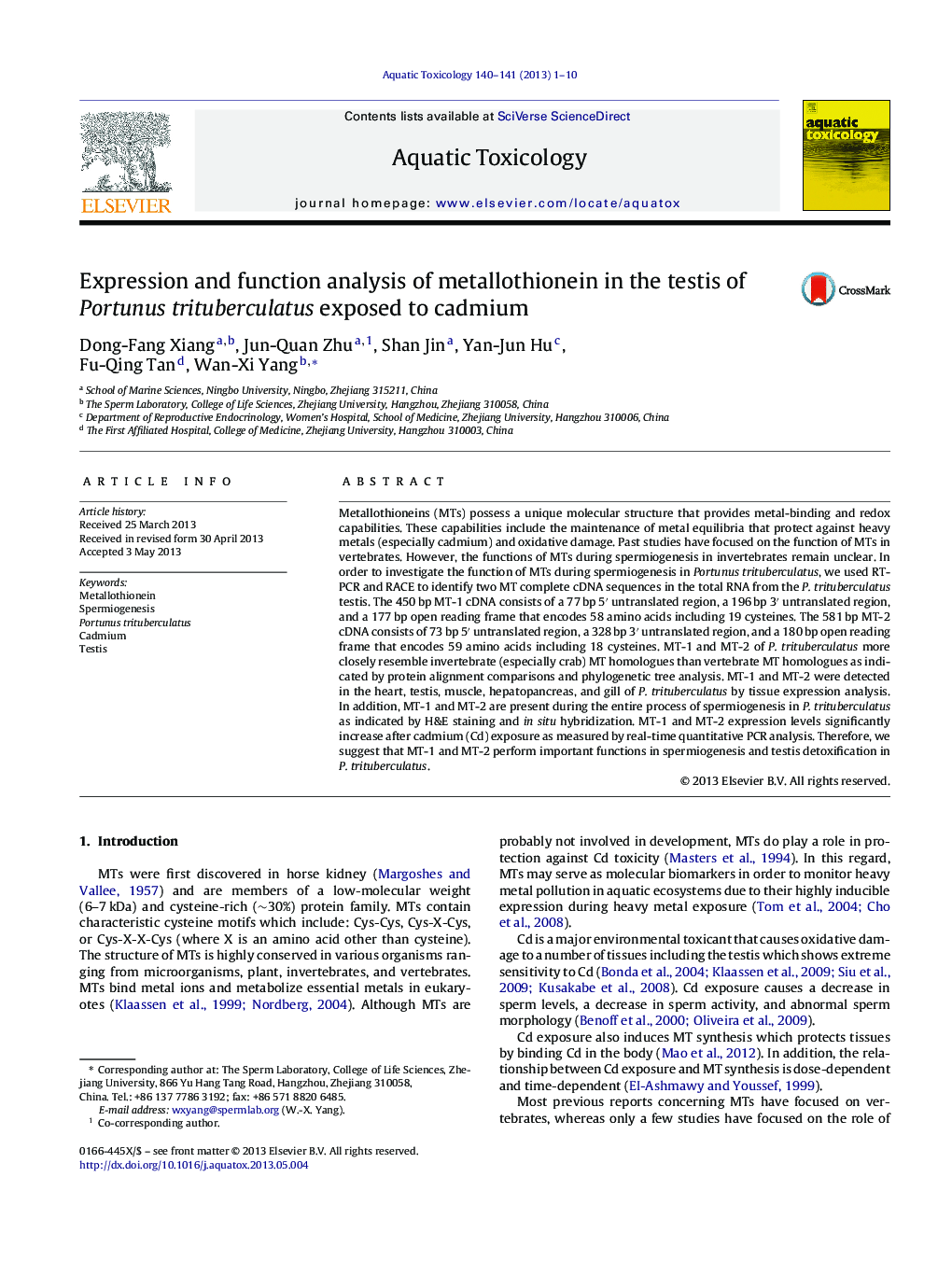| Article ID | Journal | Published Year | Pages | File Type |
|---|---|---|---|---|
| 6382479 | Aquatic Toxicology | 2013 | 10 Pages |
Abstract
Metallothioneins (MTs) possess a unique molecular structure that provides metal-binding and redox capabilities. These capabilities include the maintenance of metal equilibria that protect against heavy metals (especially cadmium) and oxidative damage. Past studies have focused on the function of MTs in vertebrates. However, the functions of MTs during spermiogenesis in invertebrates remain unclear. In order to investigate the function of MTs during spermiogenesis in Portunus trituberculatus, we used RT-PCR and RACE to identify two MT complete cDNA sequences in the total RNA from the P. trituberculatus testis. The 450Â bp MT-1 cDNA consists of a 77Â bp 5â² untranslated region, a 196Â bp 3â² untranslated region, and a 177Â bp open reading frame that encodes 58 amino acids including 19 cysteines. The 581Â bp MT-2 cDNA consists of 73Â bp 5â² untranslated region, a 328Â bp 3â² untranslated region, and a 180Â bp open reading frame that encodes 59 amino acids including 18 cysteines. MT-1 and MT-2 of P. trituberculatus more closely resemble invertebrate (especially crab) MT homologues than vertebrate MT homologues as indicated by protein alignment comparisons and phylogenetic tree analysis. MT-1 and MT-2 were detected in the heart, testis, muscle, hepatopancreas, and gill of P. trituberculatus by tissue expression analysis. In addition, MT-1 and MT-2 are present during the entire process of spermiogenesis in P. trituberculatus as indicated by H&E staining and in situ hybridization. MT-1 and MT-2 expression levels significantly increase after cadmium (Cd) exposure as measured by real-time quantitative PCR analysis. Therefore, we suggest that MT-1 and MT-2 perform important functions in spermiogenesis and testis detoxification in P. trituberculatus.
Related Topics
Life Sciences
Agricultural and Biological Sciences
Aquatic Science
Authors
Dong-Fang Xiang, Jun-Quan Zhu, Shan Jin, Yan-Jun Hu, Fu-Qing Tan, Wan-Xi Yang,
